The Truth and Reconciliation Commission of Canada concluded its work in 2015 with its final report and 94 Calls to Action. Many of these calls focus on educating Canadians about the residential school system and its ongoing legacy.
Unfortunately, most remain unaddressed by Canada, including one rarely discussed in the public discourse meant to educate new Canadians: Call to Action 93.
We call upon the federal government, in collaboration with the national Aboriginal organizations, to revise the information kit for newcomers to Canada and its citizenship test to reflect a more inclusive history of the diverse Aboriginal peoples of Canada, including information about the Treaties and the history of residential schools.
The Canadian citizenship test and accompanying study guide, Discover Canada: The Rights and Responsibilities of Citizenship, remain violently obsolete.
Meanwhile, since the calls were made, 1.3 million people have become naturalized Canadian citizens based on an outdated education. Outdated is an understatement: the citizenship education program revolves around a racist history, archaic notions of Indigenous peoples, and descriptions of colonial relations that reproduce settler harm.
The ‘progress’ of Call to Action 94: the oath of citizenship
While Call to Action 93 is incomplete, 94 has seen some movement. To the casual observer, a new Indigenous supplement in the oath of citizenship — as the TRC called for — may seem an improvement. But context is required here: after pledging allegiance to the monarch, new Canadians now also commit to upholding Indigenous treaties by virtue of the fact that the Constitution recognizes and affirms Indigenous rights.
Notably, the bill that legislated this, Bill C-8, was only accelerated in 2021 after the discovery of unmarked gravesites on the grounds of a Kamloops residential school, children killed by residential schools’ abuse and neglect. It was a discovery that demanded action.
This order of allegiance in the oath seems like a familiar pattern of Indigenous rights subsumed by colonial interests. It seems similar to the many school boards that now include a land acknowledgment, then move on to business as usual with “O Canada” — or in how Prime Minister Justin Trudeau tears up discussing Indigenous relations and then proceeds to ignore Indigenous rights and pushes for pipelines to be built without full Indigenous consent.
Similarly, the revised oath for new Canadians still rests on respecting the monarchy as the final arbiter of Canadian relations.
Call to Action 94 ensures that arriving immigrants are still part of a colonial project that continues to dispossess Indigenous Peoples from their land. The progress (or lack thereof) on the “newcomer” Calls to Action must be interpreted through this lens.
What are new Canadians really learning?
Returning to Call to Action 93 and the necessity of change here requires exploring what currently exists. What are new Canadians learning about Canada?
I’ve identified three key themes.
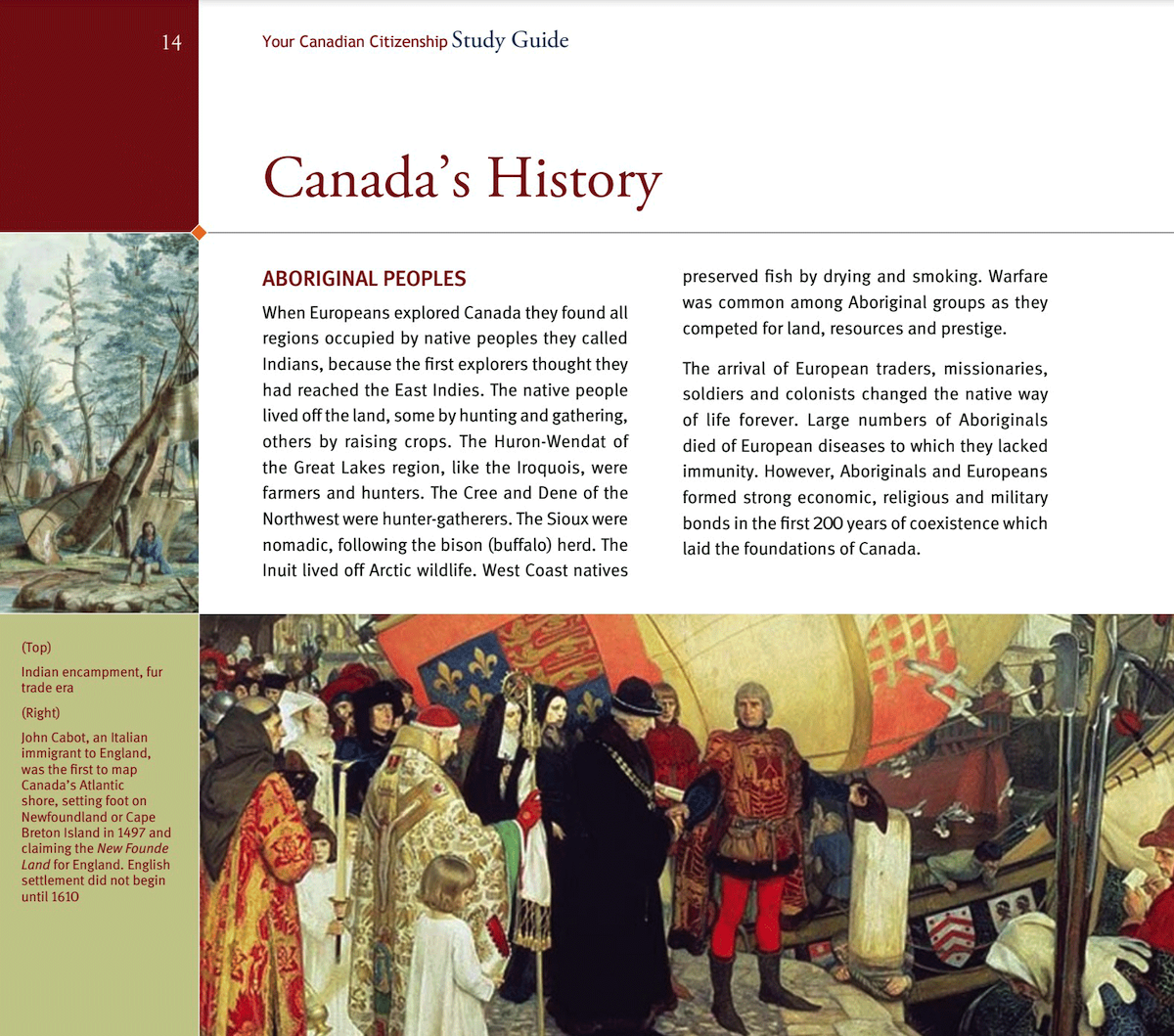
1. Newcomers are learning to erase genocide.
Canada emerged because early settlers encountered a world where land is described as a site for colonization, and battles for land sovereignty were between the British and the French. Together, these two warring factions spent the 18th century fighting over land, which was lost, won and consolidated. Throughout, there is a settler narrative of colonial “explorers” as modern, forward-thinking builders of nations and civilization, contrasted with Indigenous people who related naively to the land.
The guide asserts, “The native people lived off the land, some by hunting and gathering, others by raising crops... before the settlers arrived.”
There is nothing of pre-colonial Indigenous sovereignty followed by mass murder, ethnic cleansing and Indigenous resistance.
The pictures in the study guide tell a similar story. “Historical” panels show Indigenous people as decrepit and threadbare, in muted beiges and pale blues; by comparison, the panels showing the colonizers are large and gloriously resplendent in style, form and colour.
Even the grammar in the study guide does disturbing work. A pithy paragraph describes the genocide of Indigenous Peoples in the passive voice, thereby hiding responsibility: “Large numbers of Aboriginals died of European diseases to which they lacked immunity.” In one slick grammar move, carnage just happened, rather than being created by genocidal public policy involving actual perpetrators.
The enormity of treaty violations, deceptions, land theft and genocide — not to mention Indigenous resistance — is referenced in one terse sentence: Treaties “were not always fully respected.”
More, the story of residential schools is summarized with a tidy ending: “In 2008, Ottawa formally apologized to the former students.” These are the settler fantasies Canada’s newest citizens have to subscribe to in order to gain citizenship, the stories that settlers believe about themselves and those they colonized, and the stories that attempt to define colonial relations with Indigenous people.
2. Newcomers are learning to normalize colonial plunder.
Reversing the violence of the study guide is a matter not just of including Indigenous histories but also of thinking about the layers of settler colonialism.
Doing so is in the spirit of Call to Action 47:
We call upon federal, provincial, territorial and municipal governments to repudiate concepts used to justify European sovereignty over Indigenous peoples and lands, such as the Doctrine of Discovery and terra nullius, and to reform those laws, government policies and litigation strategies that continue to rely on such concepts.
In other words, Call 47 is meant to repudiate the colonial concepts upon which the study guide heavily relies. Embedded in the settler histories are settler ideas that normalize and exalt colonial practices and symbols. Becoming Canadian citizens compels immigrants to subscribe to these stories, practices and symbols that are tightly interwoven and synergistically work to fortify business as usual for Canada.
Unsurprisingly, the study guide preaches an exploitative relationship to land that builds on both the Doctrine of Discovery (the right to “discover” and claim land) and terra nullius (the idea that land not colonized by Europeans is legally “empty”).
For example, Canada’s provinces are largely described as places of mining and extraction: “Thousands of miners came to the Yukon during the Gold Rush of the 1890s, as celebrated in the poetry of Robert W. Service.”
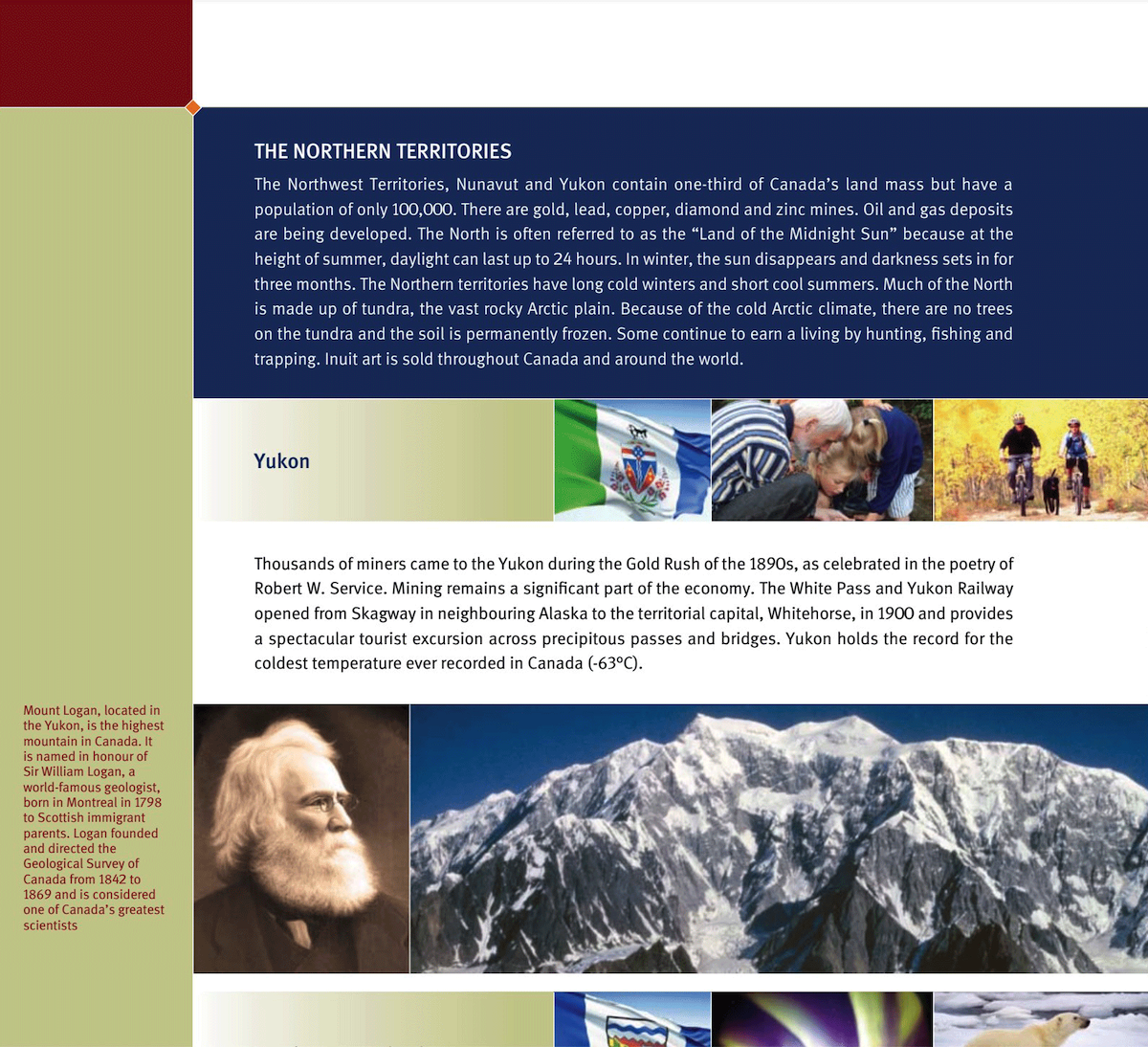
Describing Yukon to new Canadians in this way underlines the colonial notion that miners had a “right” to extract resources from the apparently empty land and that Canada glorifies mining. Consequently, the study guide encourages new Canadians to see mining as consequence-free, despite hundreds of years of settlers exploiting Indigenous lands without proper consent and fair compensation and degrading the land.
What the study guide does not say is that Indigenous people both in the past and to this day continue to experience disproportionate environmental consequences from colonial resource extraction: mining nickel has poisoned air and soil in Sudbury with sulphur dioxide, whereas paper mill processing has poisoned Grassy Narrows with mercury, to name two of countless examples.
The federal government has consistently violated treaties and discounted Indigenous lives. However, rather than acknowledge this in the study guide for new Canadians, immigrants are taught to repeat the same tired performance of reconciliation, where they may recite an oath to treaties but ignore the actions to uphold them and prioritize colonial interests instead.
Finally, describing land as primarily economically useful reinforces misinformation about Indigenous people and how they have related to the land. It also biases new Canadians’ interpretations of present-day legacies and conflicts related to extraction and development, such as Indigenous resistance and solidarity against the Wet’suwet’en pipeline construction or the land defenders at 1492 Land Back Lane.
3. Newcomers are learning to venerate exploration.
Consistent with the themes described above, the guide also uses colonized place names and upholds the heroes of colonization. On the former, it consistently describes landmarks only as named by the British or the French, such as “New Founded Land,” named by John Cabot in 1497, or the province of Alberta and Lake Louise, both named after Queen Victoria’s daughter, Louise Caroline Alberta.
The Yukon panel characterizes William Logan, a Scottish settler, as an “immigrant” and erases any mention of the Champagne and Aishihik, Kluane and White River First Nations on whose territories Mount Logan lies — a landmark, like so many other landmarks, named after a settler.
Nowhere in the guide are we informed of the Indigenous meanings behind any place names in Canada — save for the word “Canada” itself, described as a European rendering of the Iroquoian word for “village” learned from “two captured guides.” In other words, the only names worth mentioning are the places that settlers have co-opted.
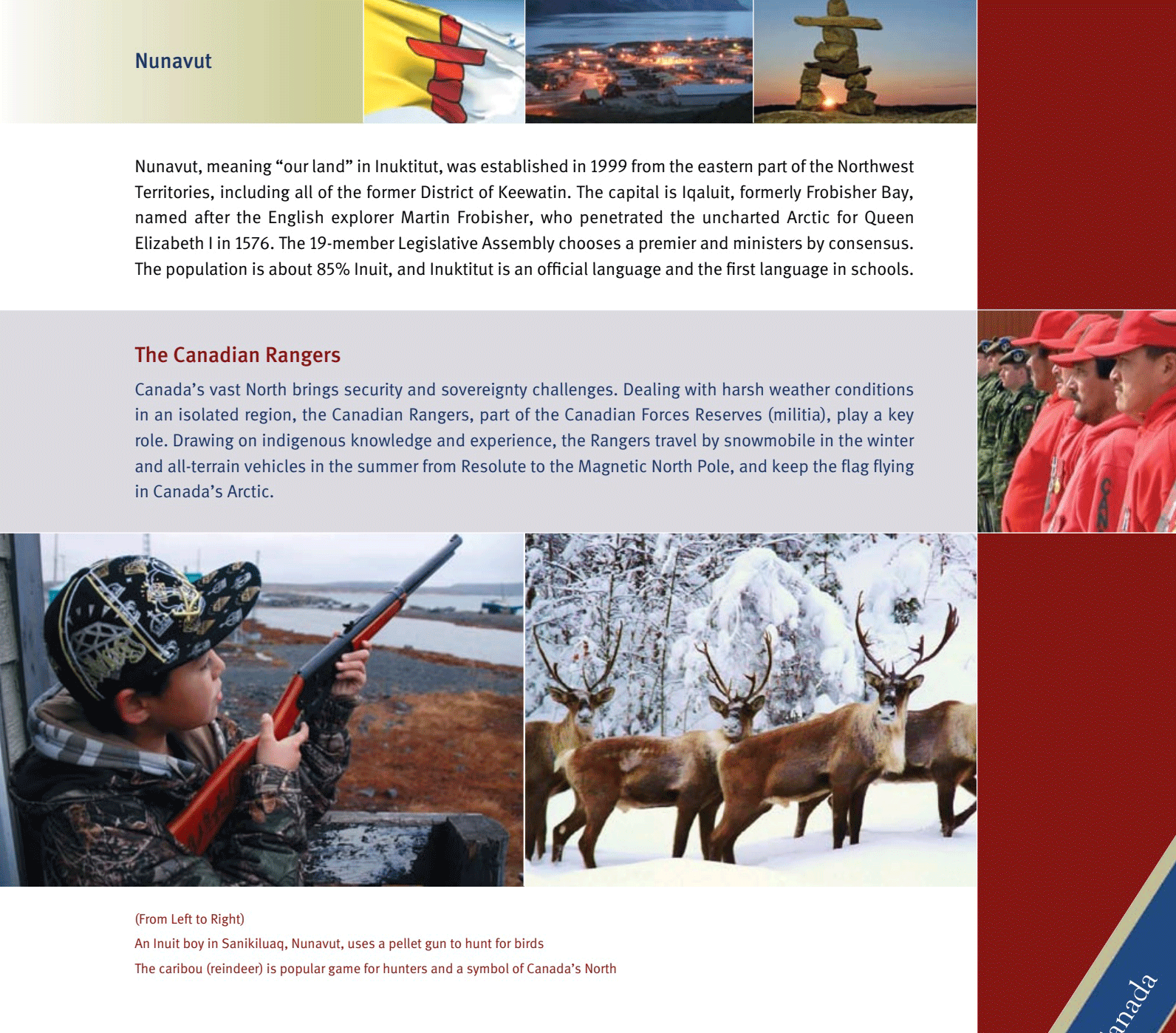
In one particularly damning example, the study guide informs us about the naming of Iqaluit, not by telling us what Iqaluit means (“the place of many fish”), but by telling us its former name: Frobisher Bay. Frobisher was an English explorer who, according to the study guide, “penetrated the Arctic for Queen Elizabeth in 1576.” The sexual violence implicit here corresponds to Frobisher’s actions a year later, in 1577, when he kidnapped, assaulted and was ultimately responsible for the deaths of numerous Inuit, including Inuit women.
Even when the guide refers directly to Inuit — in an effort to seemingly praise Indigenous Peoples and their knowledge of the land — it does so by demonstrating how they gave their knowledge of the land in service of the settler state to assert its colonial sovereignty and security.
As the guide moves into the contemporary, it describes the Canadian military’s Arctic force: “Drawing on indigenous knowledge and experience, the Rangers travel by snowmobile in the winter and all-terrain vehicles in the summer from Resolute to the Magnetic North Pole, and keep the flag flying in Canada’s Arctic” (note the lowercase letter “i” in Indigenous).
In the same breath that it recognizes Inuit expertise, the study guide describes their knowledge as seamlessly fortifying the colonial nation. The photo even manages to symbolically bring in the monarchy with an Inuit boy who is hunting wearing a baseball cap emblazoned with the state crown.
Consistent with the citizenship oath, any shred of recognition towards Indigenous Peoples is in the service of upholding the colonial state.
For newcomers, a misleading map to Canada
All of the above speak to the high cost of the inexplicable delays in meeting the demands of Call 93. Canada has one of the highest immigration rates in the world, bringing in 500,000 immigrants annually.
There are currently eight million permanent residents in Canada, which is 20 per cent of the population. Some of them may go to college, university or trade school to upgrade their education. But all of them will go through the federal immigration system, making the government the biggest educator of immigrants in Canada.
To appreciate the significance of these narratives, consider how citizenship ceremony officials would walk around the test centres ensuring naturalizing citizens were actually mouthing the words of the oath before many citizenship ceremonies shifted to digital formats during the early pandemic years.
Some will remember this surveillance became a flashpoint between the Harper government and a Muslim woman, Zunera Ishaq, who insisted on wearing her face covering during her oath ceremony or taking the oath privately with a female official. Obviously, the Harper government’s obsession with visibly Muslim women was the main issue. But how could officials also be sure she was mimicking settler stories?
A central, unresolvable tension lies at the heart of the citizenship process: how to respect Indigenous rights, self-determination and treaties when they are subsumed under a required allegiance to a settler state.
Similar to how adults teach children to say the magic word “please” to access privileges, the need to take the oath and subscribe to the stories in the study guide sets up a political relationship for immigrants in their new home. It is the blueprint for how new Canadians are expected to relate to Canada and to Indigenous Peoples.
As a personal example, when talking to an immigrant friend in 2016, I suggested we do a land acknowledgment at her community festival, and my friend’s response was, “That thing Trudeau does? Yes, we can do that.”
The process of welcoming immigrants to Canada should reflect what it might be to be in something, but not of it.
Immigrants cannot be tools in the last, desperate breath of a settler state’s attempt to fortify colonial relations. ![]()
Read more: Indigenous, Rights + Justice, Federal Politics




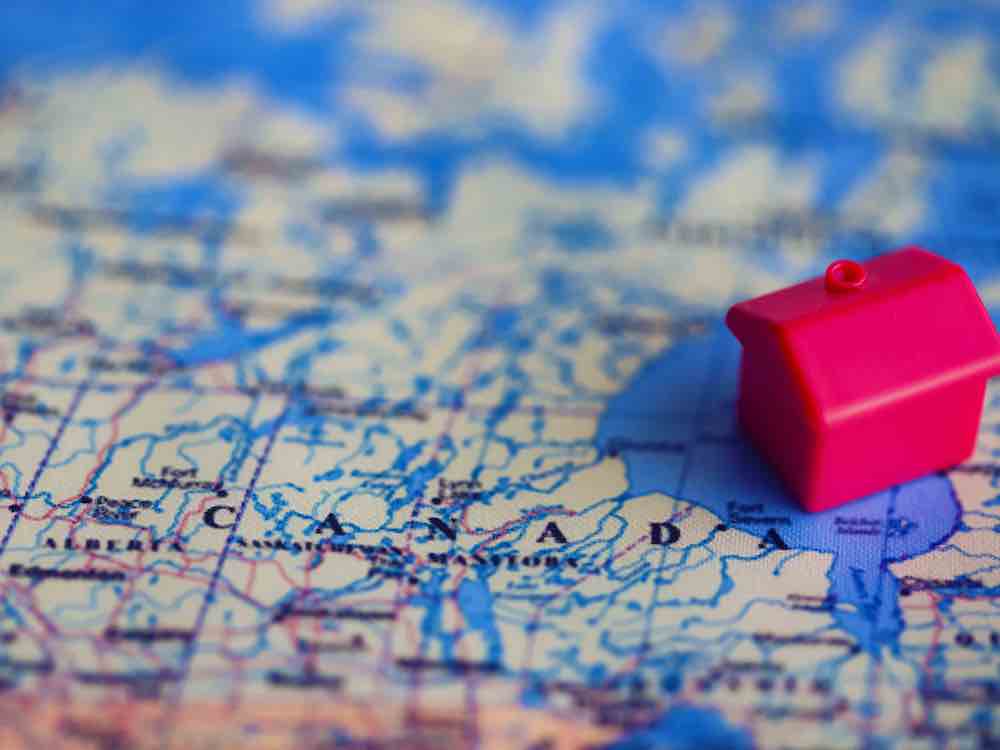







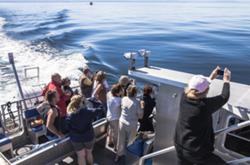
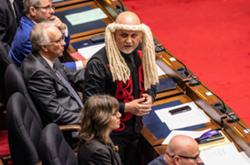
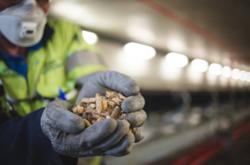
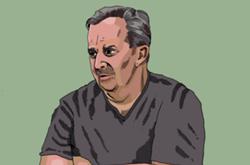
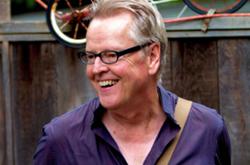
Tyee Commenting Guidelines
Comments that violate guidelines risk being deleted, and violations may result in a temporary or permanent user ban. Maintain the spirit of good conversation to stay in the discussion and be patient with moderators. Comments are reviewed regularly but not in real time.
Do:
Do not: